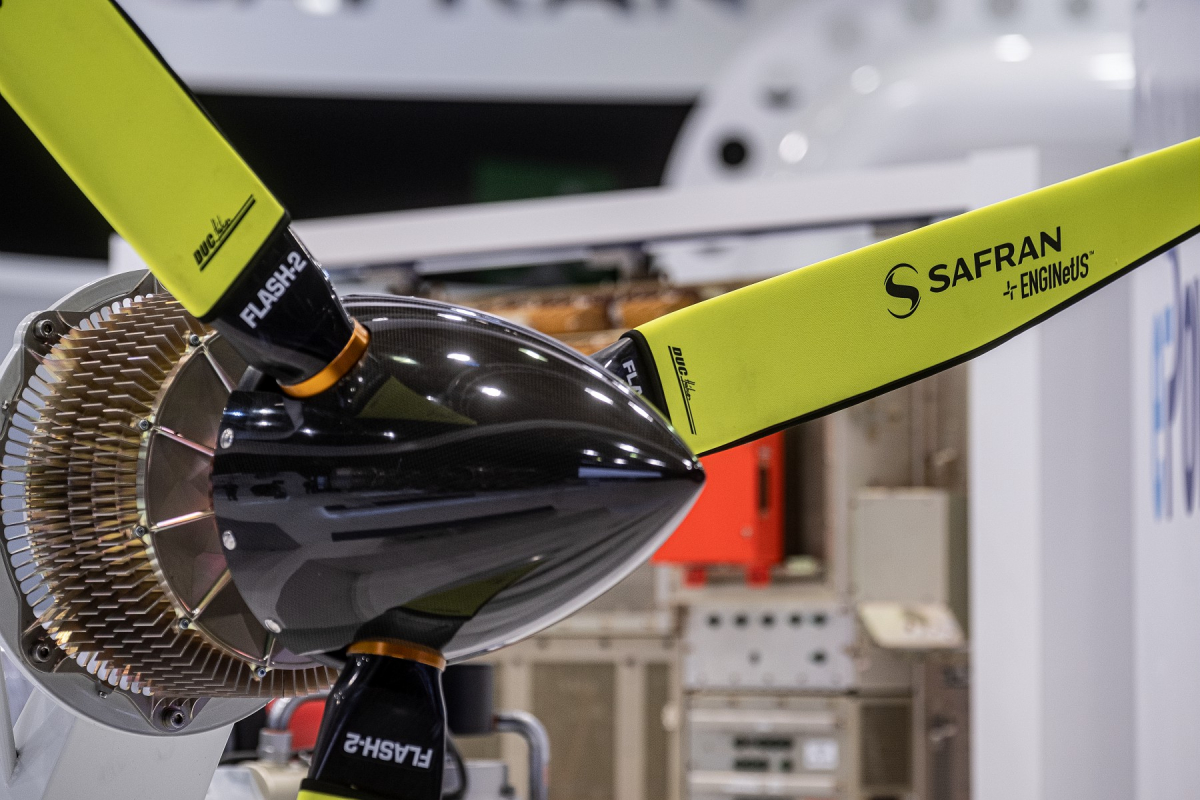Revealed during last Salon du Bourget, the EcoPulse distributed hybrid propulsion demonstrator, which brings together Daher, Airbus and Safran, has just completed its preliminary design review. This is a key milestone.
Decarbonized aircraft : three partners come out of their silence
The long silence around the EcoPulse distributed hybrid propulsion demonstrator is now explained.
Daher, Airbus and Safran’s team « worked » silently but intensively since last Salon du Bourget during which the demonstrator has been revealed. The three partners of the demonstrator which rely on TBM Daher platform have just announced that the project has reached « a key step with the successful completion of the Preliminary Design Review (PDR)", which "validates and fixes the constructive principles of the demonstrator, its level of safety and the compatibility of the system with the use of the aircraft". And the project is now in the detailed design phase for systems supplied by Safran and Airbus, in parallel with the launch of prototype assembly by Daher.
EcoPulse : First flight in 2022
In charge of the installation of components and systems, flight tests, overall design and regulatory construction, Daher has adapted its aircraft platform to ensure the integration and compatibility of a hybrid distributed propulsion system. "The successful completion of the PDR allows Daher to begin the assembly phase of the demonstrator at its site in Tarbes, where the first parts were designed and received. The final The final assembly line is scheduled to come on stream at the end of 2021, with the first flight scheduled for 2022," the three partners announced.
Safran has fixed the configuration of the six thrusters
"In charge of EcoPulse's distributed hybrid-electric propulsion system, Safran has fixed the technical configuration of its six electric thrusters. They will be powered by 50 kW ENGINeUSTM electric motors with integrated electronics and patented air cooling, as well as propellers supplied by DUC Hélices. Safran's ENGINeUSTM engine will receive EASA certification, similar to that for a turboshaft engine. The engine manufacturer "also validated the installation interfaces for the other components of the propulsion system, the power management system, the turbogenerator and the high-voltage wiring that will power the thrusters. The turbogenerator, which carried out its first bench tests in 2018, will soon undergo additional tests. The next step for Safran will be the delivery of a first electric thruster to Airbus for wind tunnel and endurance tests, in preparation for qualification for EcoPulse's first flight.
Airbus schedules the passage to the wind tunnel
After the Aerion U.S. civil supersonic aircraft project, it will soon be the EcoPulse's turn to move into the wind tunnel. "With the completion of the PDR, Airbus, which is currently working on the aerodynamic modeling of the demonstrator, will be able to program the passage of a Helicopter-Nacelle assembly into the wind tunnel in the first quarter of 2021. The engine, supplied by Safran, will also be tested. The results will be used to determine the propeller's performance on the electric motor and to validate the engine cooling process. In addition to these wind tunnel tests, Airbus is also planning additional work to simulate the aerodynamic behavior of the nacelle. See you at the next stage.

